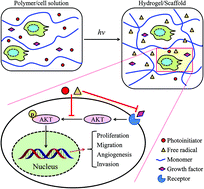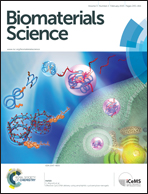The effect of photoinitiators on intracellular AKT signaling pathway in tissue engineering application
Abstract
Free-radical photopolymerization initiated by photoinitiators is an important method to make tissue engineering scaffolds. To advance understanding of photoinitiator cytocompatibility, we examined three photoinitiators including 2,2-dimethoxy-2-phenylacetophenone (DMPA), Irgacure 2959 (I-2959), and eosin Y photoinitiating system (EY) in terms of their effects on the viability of HN4 cells and expression levels of intracellular AKT and its phosphorylated form p-AKT. Our results show that the photoinitiators and their UV-exposed counterparts affect intracellular AKT signaling, which can be used in conjunction with cell viability for cytocompatibility assessment of photoinitiators.



 Please wait while we load your content...
Please wait while we load your content...